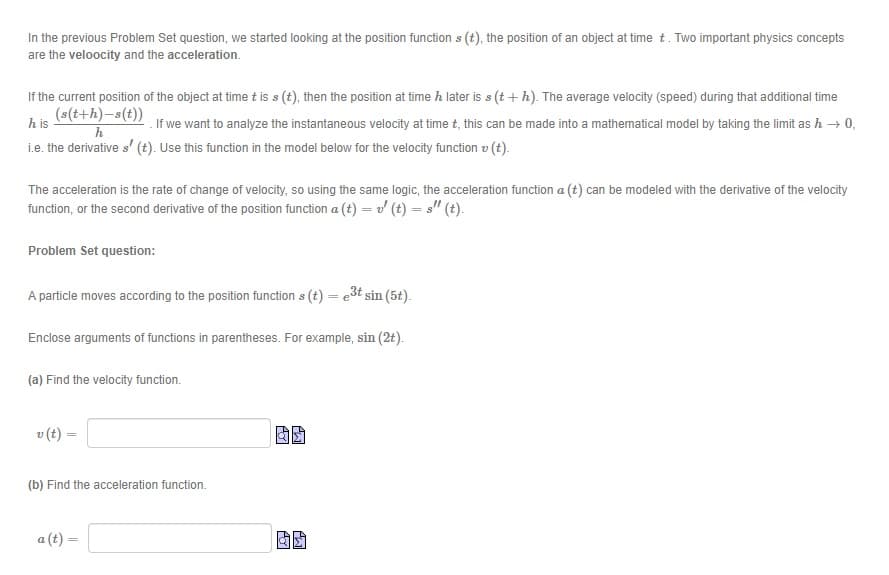In the previous Problem Set question, we started looking at the position function s (t), the position of an object at time t. Two important physics concepts are the veloocity and the acceleration. If the current position of the object at time t is s (t), then the position at time h later is s (t +h). The average velocity (speed) during that additional time (s(t+h)-s(t)) h is If we want to analyze the instantaneous velocity at time t, this can be made into a mathematical model by taking the limit as h → 0, i.e. the derivative s' (t). Use this function in the model below for the velocity function v (t). The acceleration is the rate of change of velocity, so using the same logic, the acceleration function a (t) can be modeled with the derivative of the velocity function, or the second derivative of the position function a (t) = v (t) = s" (t). Problem Set question: A particle moves according to the position function s (t) = e3t sin (5t). Enclose arguments of functions in parentheses. For example, sin (2t). (a) Find the velocity function. v (t) (b) Find the acceleration function. a (t) =
Unitary Method
The word “unitary” comes from the word “unit”, which means a single and complete entity. In this method, we find the value of a unit product from the given number of products, and then we solve for the other number of products.
Speed, Time, and Distance
Imagine you and 3 of your friends are planning to go to the playground at 6 in the evening. Your house is one mile away from the playground and one of your friends named Jim must start at 5 pm to reach the playground by walk. The other two friends are 3 miles away.
Profit and Loss
The amount earned or lost on the sale of one or more items is referred to as the profit or loss on that item.
Units and Measurements
Measurements and comparisons are the foundation of science and engineering. We, therefore, need rules that tell us how things are measured and compared. For these measurements and comparisons, we perform certain experiments, and we will need the experiments to set up the devices.

Trending now
This is a popular solution!
Step by step
Solved in 2 steps








